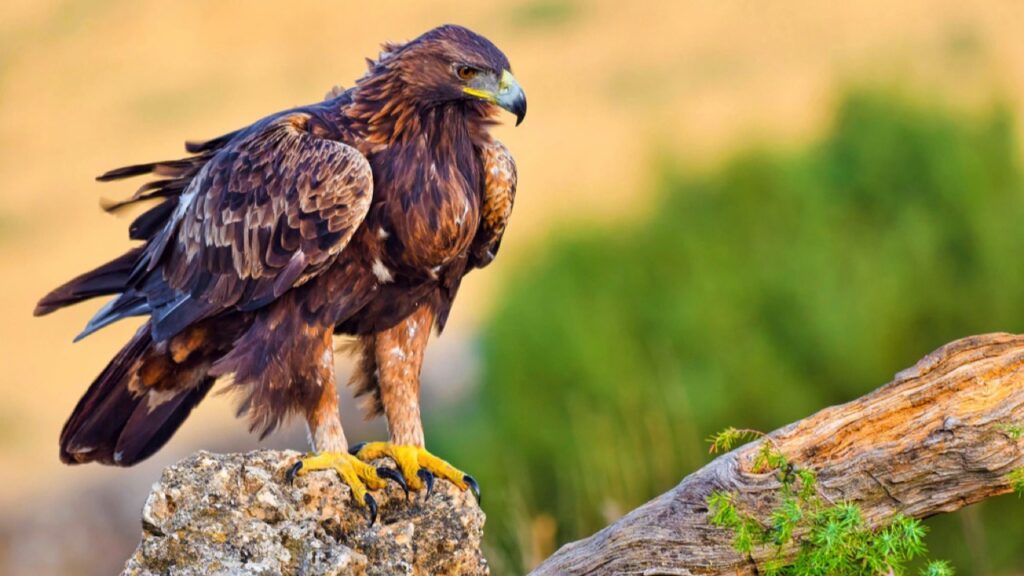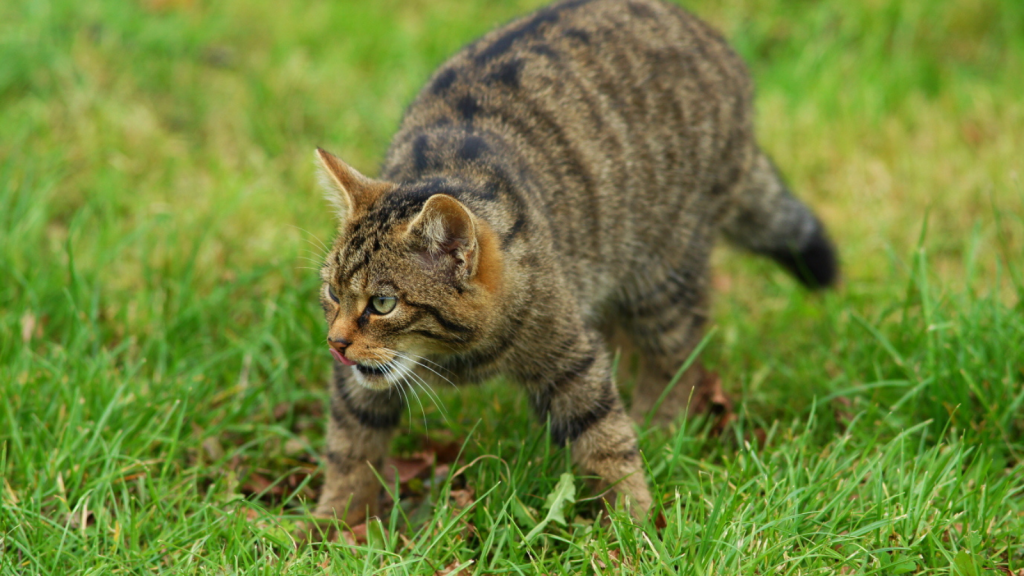The rugged Scottish Highlands are home to a wide range of fascinating creatures. From the peaks of Ben Nevis to the shores of Loch Ness, predators roam this wild landscape. These hunters have adapted to thrive in the harsh mountain environment. Some are rarely seen, while others are more common sights. Each plays a crucial part in keeping the Highland ecosystem in balance. Let’s explore 12 of the most impressive predators that rule these misty mountains.
Golden Eagle

The majestic golden eagle soars high above the Highland peaks. With a wingspan of up to 2.3 metres, these powerful birds can spot prey from great distances. They hunt mountain hares, grouse, and even young deer. Golden eagles mate for life and build massive nests called eyries on cliff edges or in tall trees. These birds of prey are protected by law in the UK, with severe penalties for anyone who harms them or their nests.
Red Fox

The cunning red fox is a familiar sight across the Highlands. These adaptable hunters eat everything from small mammals and birds to berries and insects. Foxes are mostly active at night and have excellent hearing and smell. They live in family groups and raise their cubs, called kits, in underground dens. Foxes can live up to 15 years in the wild, though most don’t survive beyond 5 years due to hunting and road accidents.
Scottish Wildcat

Often called the “Tiger of the Highlands,” the Scottish wildcat is Britain’s only native wild feline. These elusive cats are larger and stockier than domestic cats, with distinctive striped fur. They hunt small mammals, birds, and reptiles in the forests and moorlands. Sadly, Scottish wildcats are critically endangered due to habitat loss and breeding with feral cats. Conservation efforts are underway to protect pure Scottish wildcats, with captive breeding programmes and habitat restoration projects.
Pine Marten

The agile pine marten is a member of the weasel family. These tree-climbing hunters have rich brown fur and a creamy yellow “bib” on their throats. Pine martens eat small mammals, birds, insects, and berries. They’re mostly active at night and sleep in hollow trees or abandoned bird nests during the day. Pine martens have made a remarkable comeback in Scotland after near extinction, thanks to legal protection and reforestation efforts.
Otter

The playful otter is well-adapted to life both in water and on land. These sleek swimmers hunt fish, frogs, and small mammals along Highland rivers and lochs. Otters have thick, waterproof fur and webbed feet for swimming. They make their homes, called holts, in riverbank burrows or under tree roots. Otters can hold their breath for up to 4 minutes and close their ears and nostrils when diving.
Badger

The distinctive black and white striped badger is a powerful digger. These nocturnal animals live in family groups in underground setts, which can be hundreds of years old. Badgers eat a varied diet including earthworms, insects, small mammals, and plants. They play a key role in controlling garden pests and spreading seeds. Badgers are protected by law in the UK, and it’s illegal to disturb their setts or harm the animals.
Stoat

The small but fierce stoat is known for its ability to take down prey much larger than itself. In winter, stoats turn white except for their black-tipped tails, earning them the name “ermine.” These agile hunters mainly eat rabbits and rodents. Stoats are excellent climbers and swimmers, allowing them to chase prey across various terrains. They’re known for their “weasel war dance,” a hypnotic display that can mesmerise prey.
Peregrine Falcon

The peregrine falcon is the fastest animal on Earth, reaching speeds over 200 mph when diving for prey. These sleek raptors hunt other birds in mid-air, using their speed and sharp talons to catch them. Peregrines nest on cliff faces and tall buildings, and have made a strong comeback after nearly disappearing due to pesticide use in the mid-20th century. Their exceptional eyesight allows them to spot prey from over 3 kilometres away.
Adder

The adder is Britain’s only venomous snake. These shy reptiles have a distinctive zigzag pattern along their backs. Adders hunt small mammals, lizards, and amphibians, using their venom to subdue prey. They’re most active in spring and early summer, often basking in sunny spots to warm up. Despite being venomous, adder bites are rarely fatal to humans and the snakes will typically only strike when threatened.
Hen Harrier

The hen harrier is a ground-nesting bird of prey that hunts over open moorland. Males are pale grey, while females are brown with a white rump. These agile flyers feed mainly on small birds and mammals. Hen harriers face threats from illegal persecution and habitat loss, making them a rare sight in many parts of Britain. They’re known for their spectacular “sky dancing” courtship displays, where males perform acrobatic twists and turns.
Short-Eared Owl

Unlike most owls, the short-eared owl is often active during the day. These medium-sized owls have mottled brown feathers and small ear tufts. They hunt voles and other small mammals in open grasslands and moorlands. Short-eared owls are nomadic, moving to areas with abundant prey. Their large eyes are fixed in their sockets, so they can rotate their heads up to 270 degrees to look around.
Osprey

The fish-eating osprey is a summer visitor to the Scottish Highlands. These large raptors have specialized talons and reversible outer toes to help them catch slippery fish. Ospreys dive feet-first into water to catch their prey, then carry it back to their nests in tall trees or on platforms. After nearly disappearing from Britain, ospreys have made a remarkable comeback thanks to conservation efforts. They have a unique ability to close their nostrils when diving into water to catch fish.
15 Animals That Eat Hornets

Nature never fails to amaze me. Who would’ve thought so many creatures would prey on hornets? Their painful stings and fierce and aggressive behaviour make them seem like a pretty unappetizing meal to me. While hornets might seem like formidable insects that few creatures would dare to tangle with, they actually have quite a few natural enemies. From nimble birds to crafty mammals, plenty of other creatures make meals out of these stinging insects.
Read More: 15 Animals That Eat Hornets
Meet the Wolf Spider | One of Britain’s Biggest Spiders

Wolf spiders are a remarkable group of arachnids found across the UK and around the world. These agile hunters get their name from their wolf-like hunting style, actively chasing down prey rather than spinning webs. With their large eyes and hairy bodies, wolf spiders might look intimidating, but they’re actually quite beneficial to gardens and homes. These spiders help control pest populations and are generally harmless to humans. From their unique parenting techniques to their impressive hunting skills, wolf spiders are full of surprises.
Read More: Meet the Wolf Spider | One of Britain’s Biggest Spiders
15 Facts About the Honey Badger, the Fiercest Animal in Africa

The honey badger, a small but mighty creature, roams the African wilderness with a fearless attitude that’s earned it quite a reputation. These tenacious animals have captured the imagination of wildlife enthusiasts and casual observers alike. Despite their name, honey badgers aren’t closely related to European badgers and are more akin to weasels and otters. Their tough-as-nails approach to life and remarkable abilities have made them the stuff of legend. Let’s explore some fascinating facts about these extraordinary creatures that prove why they’re considered Africa’s fiercest animals.
Read More: 15 Facts About the Honey Badger, the Fiercest Animal in Africa
Becky is a fervent wildlife enthusiast and pet care expert with a diploma in canine nutrition. Her love for animals stretches beyond the domestic, embracing the wild tapestry of global fauna. With over a decade of experience in animal welfare, Becky lends her expertise to OutlandishOwl through insightful articles, captivating wildlife information, and invaluable guidance on pet nutrition. Her work embodies a deep commitment to understanding the intricate lives of animals and a passion for educating others on sustaining natural habitats. Becky's hands-on conservation efforts and her knack for translating complex dietary science into practical pet feeding tips make her an indispensable voice for creatures great and small.




